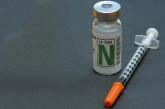Article

NPH insulin: It remains a good option
- Author:
- Ben Arthur, MD, FAAFP
- Ashley Smith, MD
- Nick Bennett, DO, FAAFP
- David Bury, DO, FAAFP
- Bob Marshall, MD, MPH, MISM, FAAFP
NPH insulin holds its own against basal insulin analogs—and it’s cheaper.
